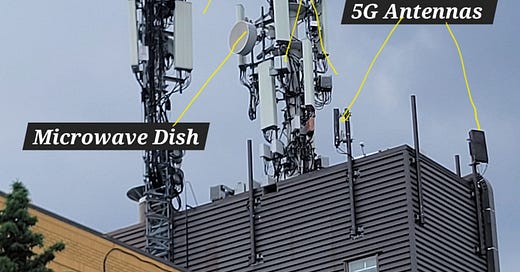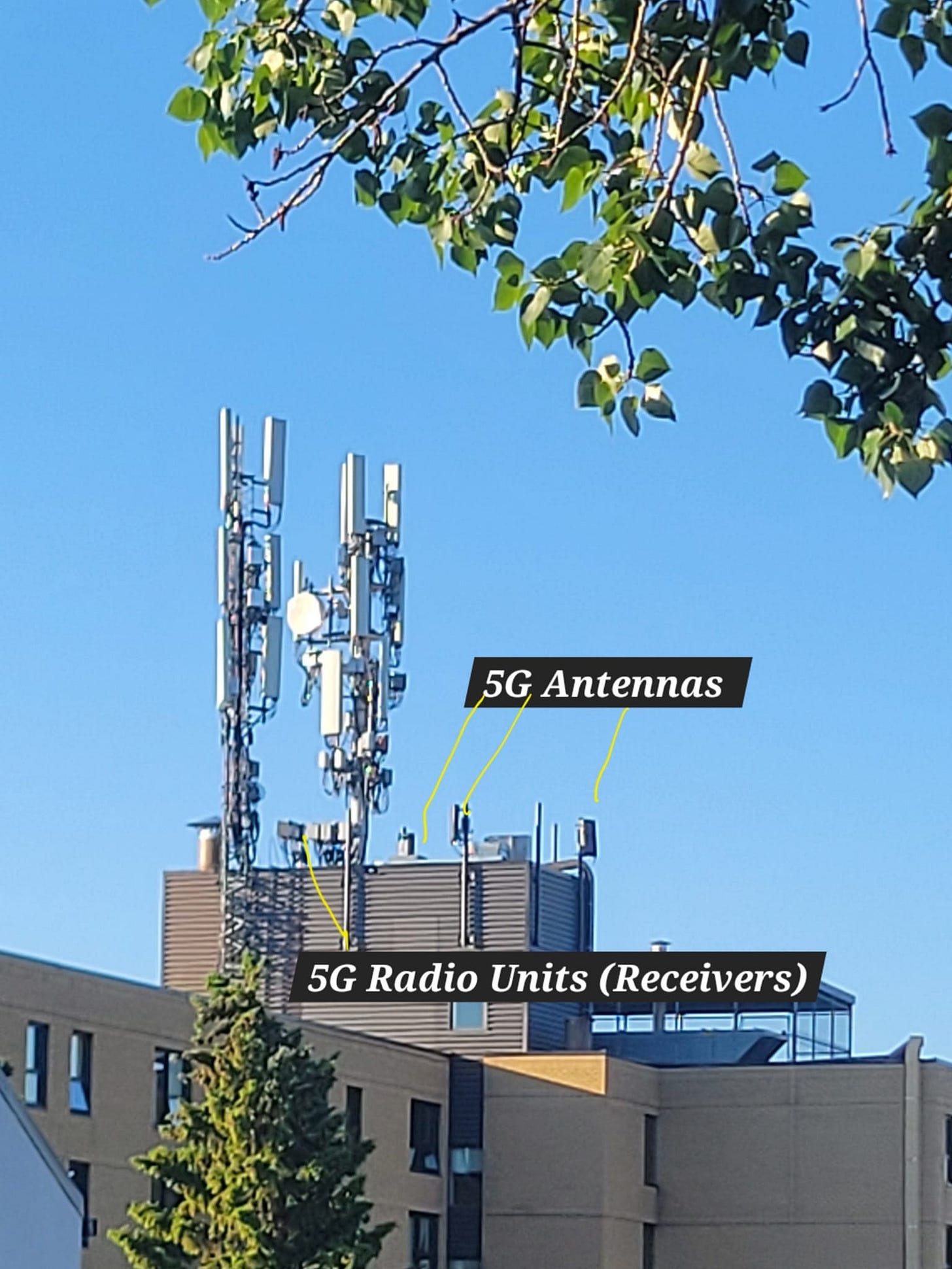Components of Cellular Towers
These cellular communication towers receive, translate, and transfer radio frequency in the form of microwaves and millimeter waves.
Antennas emit EMF radiation and in the process pickup cellular signals in the area and send the signals to other components of the tower.
Microwave dishes emit signals to other cellular towers for network backhaul (connects the core network with subnetworks, thus allowing users to access the Internet in subnetworks) and Internet. The drum focuses the signal in a particular direction.
Receivers process the signals which are picked up by the antennas.
Control electronics take the signal from the receiver and decides based upon preprogrammed functions where it goes next.
Transmitters direct the signals to their final destination (cellphone switching station) such as one cell phone to another via a call or email.
Microwaves are emitted from cellular towers in broad spectrum with the range of around 24 kilometers.
Millimeter waves are emitted in beam form with a range of 2.4 kilometers, and these waves have difficulty passing through objects such as trees and buildings.
The North American EMF standards as an example allow up 300 GHz frequency to be emitted in the public domain. Current frequency is around 2.4 GHz, and even then it is causing health effects such as headaches, body ache, nose bleeds, tinnitus, insomnia, nausea, and long-term health effects including blood and organ disorder, infertility, psychological issues, diabetes, cardiology issues, cancer. The EMF standards only recognize thermal effects from EMF radiation. Biological effects are completely ignored. (The reason is to protect telecommunication corporations from liability, and too much profit and control at stake.)
Some of the scientific findings:
https://blog.nationalcitizensalliance.ca/information-on-5g-you-will-never-hear-in-the-mainstream/








